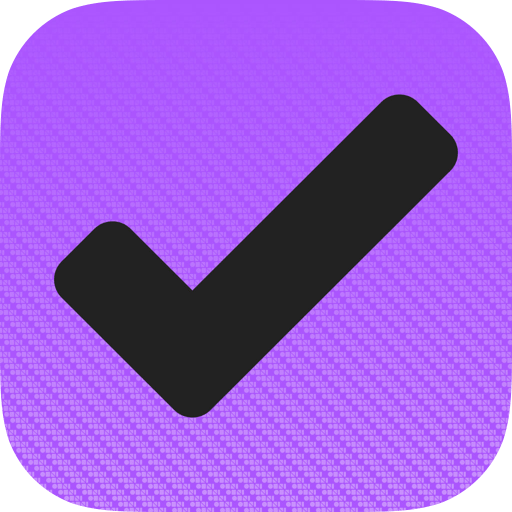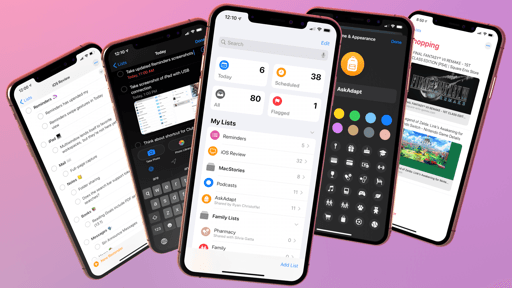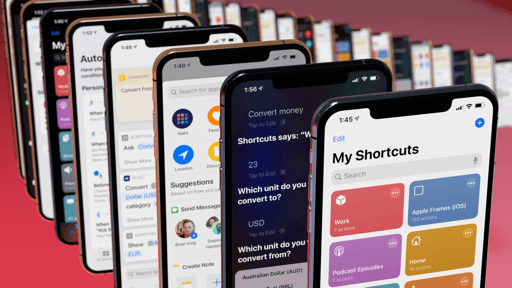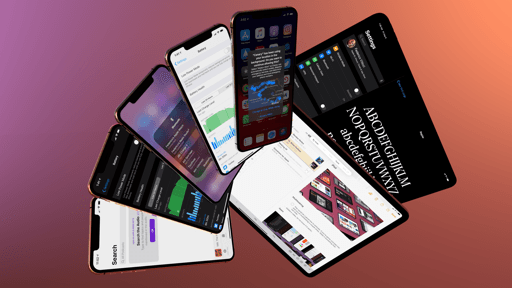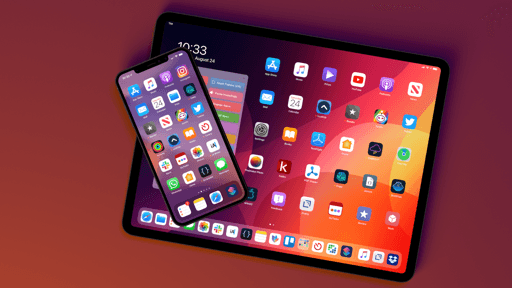What’s Still Missing from Shortcuts
Back in May, in the section of my Beyond the Tablet story titled ‘The Problems with Shortcuts’, I outlined a series of improvements I wanted to see come to the app in iOS 13. Of those 10 wishes, Apple delivered on 4 of them in iOS 13 – arguably, the toughest ones. After having used the new Shortcuts app for the past three months, I’ve gone through that list again and picked the issues that still annoy me the most. Plus, I’ve added some new entries based on my experience with iOS 13.
Folders. I know that Apple is aware of the need for heavy Shortcuts users to organize their shortcuts in folders, and I can’t believe they still haven’t added this functionality to the app. In May, I theorized that Apple may go for something more innovative than plain folders for shortcut organization. Whatever their solution may be, I just hope it comes at some point during the iOS 13 cycle; I can’t stand having to find my shortcuts via search anymore.
Quick Look support in Siri. I also requested this feature back in May, and I was surprised to see it didn’t make it into iOS 13.1 despite conversational shortcuts. The ‘Quick Look’ action should be bridged to Siri when a custom shortcut is running within the context of the assistant. Scriptable’s leading the way here with its Quick Look-Siri integration, which can present images, documents, videos (!), and even HTML content (!!) inside Siri. At the very least, Apple should match Simon Støvring’s app here.
Deeper Files integration. Another of my requests from May involved Shortcuts’ integration with the Files app. In iOS 13, Shortcuts is still limited to writing files to and reading them from its own document storage located under iCloud Drive/Shortcuts; if you want to access files from other apps, you have to show a document picker and select them manually every time. I’d love to see Apple support the bookmarks technology that allows apps such Scriptable and Working Copy to access documents stored in other apps’ containers; if third-party developers are doing it, there’s no reason Shortcuts shouldn’t integrate with an existing, open API that makes file management on iOS faster and more customizable. It’s time for Shortcuts to go beyond its document sandbox.
More triggers for automation. iOS 13.1 hasn’t even come out yet, and here I am, already complaining about the lack of certain triggers for personal automation. In addition to the ability to run shortcuts when a Bluetooth device connects or an app opens, I would have liked to see the opposite too: when a specific device is disconnected, and when an app is closed (I would use the latter to automate my time-tracking setup). In the future, I’d also like to see third-party triggers for events happening inside apps, but I’ll save this one for next year’s wish list.
Different sets of widgets between devices. Now that the iPad comes with a revamped Home screen with pinned widgets (more in the next chapter), I realize that there are certain widget shortcuts I prefer to have handy on my iPhone, and others that are better suited for work on the iPad. Because of how iCloud sync has been implemented in Shortcuts though, you can only keep one set of widget shortcuts enabled across all your devices. In the future, I’d like the option to keep my widgets separate between the iPhone and iPad.
Better actions for Apple apps. Apple didn’t take iOS 13 as an opportunity to update their Shortcuts actions for new features of certain apps that already integrate with it. For instance, the Reminders actions in Shortcuts do not support subtasks, attachments, or the new URL field of Reminders in iOS 13; Notes actions do not support rich text or attachments; you can’t automate downloading files with Safari. Hopefully, now that Shortcuts offers a flexible parameter API, different teams at Apple will be able to build integrations with new features of their apps more easily than before.
Proper debug tools. Lastly, I realize that this is probably low on Apple’s list of priorities given the need to focus on features with a wider appeal, but for those of us who spend hours creating complex shortcuts, it’d be great to have real debug tools inside the editor for testing long chains of actions. I shouldn’t have to drag in a ‘Show Alert’ action every time I want to double-check the output of a previous action; there should just be a simple ‘Inspect’ button to pause the editor when it reaches a specific action, so you can see what will be passed on to the next action (Editorial used to offer something similar). Furthermore, I’d like to see gestures to insert actions above or below the currently selected one; along the same lines, it’d be fantastic to be able to fold blocks of actions to make it easier to scroll shortcuts, such as Apple Music Wrapped, that span hundreds of actions. If Apple were to ever consider an “expert mode” for Shortcuts, debug tools would be a great fit for it.
A New Shortcuts Era
Last year, I called Shortcuts one of Apple’s most ambitious software bets in years, and I stand by that. With the unification of shortcuts in iOS 13, a new API for apps, a variety of new actions, and conversational mode coming in iOS 13.1 alongside automations, Shortcuts isn’t just a centralized dashboard for automation and Siri personalization. Shortcuts has now fully eclipsed Automator – its original source of inspiration – to become something else entirely: a visual programming language that doesn’t behave or feel like traditional programming at all; a playground where apps become features that talk to each other; a creation tool that lets users customize their Siri experience and, effectively, write their own pieces of software. The Mac never had anything like Shortcuts; no other company can currently aspire to ship anything remotely close to Shortcuts’ platform integrations and app ecosystem.
As Apple has seemingly come to terms with using the word “automation” in Shortcuts, a new vision is laid forth: that beyond a niche of loyal pro users, Shortcuts’ automation model can extend to HomeKit; that it can assist users in their daily routines as well as people with specific accessibility needs; that more than ever, the future of Siri’s integration with apps lies within Shortcuts.
In a software update packed with new features and modernized apps, Shortcuts’ sheer brilliance stands alone, an ambition boldly executed by Apple, proudly presented to users in its best form yet.
